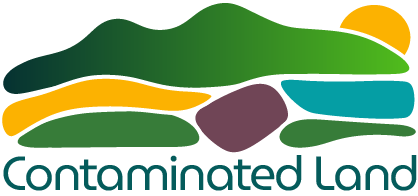Ex situ thermal treatments are remediation techniques that utilise high temperatures to remove or destroy contaminants within excavated soils. These methods induce physical and chemical transformations—such as volatilisation, combustion, and thermal degradation—that target a broad spectrum of pollutants, including volatile organic compounds (VOCs), semi-volatile organic compounds (sVOCs), PCBs, PAHs, and even complex materials like asbestos and PFAS. While organic pollutants are typically destroyed through combustion, volatile inorganic contaminants, like mercury, may be removed but must be captured downstream. Thermal systems can address nearly all soil types, though soils rich in moisture, clay, or organic matter are more energy-intensive and pose operational challenges.
There are several thermal treatment variants, including incineration, pyrolysis, gasification, thermal desorption, and indirect heating. These may be broadly classified into one-stage or two-stage processes, although the distinction is often blurred in practice. For instance, incineration involves the direct combustion of contaminants within the soil matrix, typically at very high temperatures, and is often accompanied by a secondary chamber to treat off-gases. Two-stage systems, such as thermal desorption, heat soil to moderate temperatures to volatilise contaminants, which are then combusted separately. These approaches are effective in treating both organic and inorganic contaminants and may even recover energy or useful by-products, such as pyrolysis oils or thermally treated soils usable as fill material.
Despite their efficacy, thermal treatments have significant drawbacks. High temperatures irreversibly alter soil structure, damaging clay minerals and depleting organic matter, making soil reuse in ecological contexts difficult. Processes are also resource-intensive, requiring robust infrastructure, secure access, energy supply, and emissions control systems. Incineration in particular yields residual materials like fly ash and bottom ash that are no longer soil-like and must be carefully managed. Moreover, if combustion is incomplete, persistent organic pollutants (POPs) may be generated, posing further environmental and health risks. Fugitive emissions, odour, and noise are additional concerns for nearby communities.
Implementation can be either at permanent centralised facilities or at temporary hubs serving clusters of contaminated sites. In some cases, cement kilns have been adapted for soil incineration. Thermal processes may also be used alongside other technologies—for example, to treat residues from soil washing or to handle emissions from vapour extraction. From a regulatory standpoint, ex situ thermal treatments typically fall under both contaminated land and waste incineration regulations. While these treatments offer effective source control and straightforward validation, sustainability concerns include irreversible soil damage, emissions, and high energy consumption, which must be weighed carefully against the benefits of high contaminant removal efficiency and risk mitigation.


